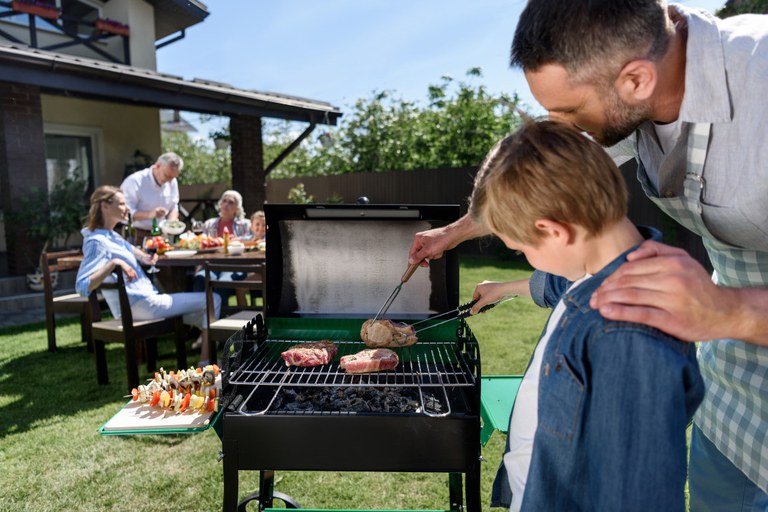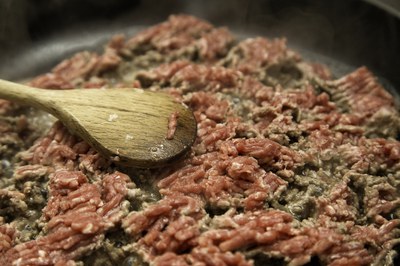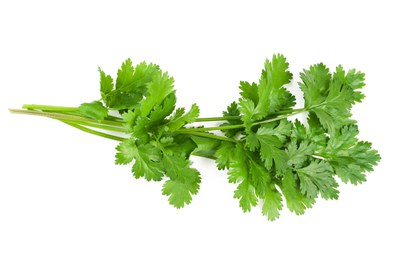How Many Calories Per Serving of Ground Beef
Beef is a versatile menu item whether you're cooking for one, two or a crowd. Beef provides protein, vitamins and minerals. A typical serving size for beef and other meat is 3 ounces, which is about the size of a deck of cards. A 3-ounce serving of lean ground beef has about 180 calories, 10 grams of fat and 15 percent of the daily recommendation for iron.

iStock.com
The amount of fat in meat depends on the cut and cooking method. To reduce fat content, trim away all visible fat from roasts before cooking. Broil, grill or roast meat instead of frying with added fat; drain excess fat after cooking.
Go Lean with Protein
MyPlate provides the latest nutrition recommendations from the U.S. Department of Agriculture. You can find your nutrition recommendations for the Protein Foods Group.

Choosing Beef
When purchasing beef, follow these tips:
- Choose raw beef that is bright cherry red and free of gray or brown blemishes.
- Inspect the packaging. Packages should be cold, tightly wrapped and free of leaks or tears.
- To prevent cross-contamination, place packages of meat in plastic sacks (if available) and put in the bottom of the grocery cart.
Quick tip: Purchase about 1 pound of ground beef or boneless roast for four servings.
Consider Trying "Value Cuts"
Several "value cuts" from underutilized parts of the chuck and round are available. They are cut differently, making them more useful and reasonably priced, compared with traditional cuts, such as T-bones, tenderloins and rib-eye steaks.
The value cuts are considered lean. For example, a 3-ounce serving of grilled petite tender has 150 calories and 6 grams of fat. These cuts can be used in a number of different dishes and with a variety of preparation methods, such as grilling, broiling or skillet cooking.
Flat iron steak is cut from the chuck/shoulder section. These steaks can be prepared by grilling or skillet preparation.
Petite tenders are cut from the shoulder/chuck section. Petite tenders can be sliced into medallions or cooked whole using dry-heat methods, such as roasting or grilling.
Ranch cut steak is from the chuck/shoulder and can be prepared by grilling or broiling.
Note: Flat iron steaks, petite tenders and ranch cut steaks, cut from the arm portion of the chuck, sometimes are labeled "boneless arm steaks."
Western griller steak is from the bottom round, and the suggested preparation method is marinating followed by grilling/broiling or braising (simmering with a small amount liquid, covered).
Sirloin tip side is from the round. The suggested preparation method is marinating followed by grilling or broiling.
Cook to Safe Internal Temperatures! Use a Food Thermometer
If available, read the instructions that came with your food thermometer. Some thermometers can be "calibrated" or adjusted for accuracy. Calibrate your thermometer by placing it in a container half filled with crushed ice and the other half with cold water. The thermometer should read 32 degrees Fahrenheit. Adjust the thermometer accordingly.
Insert a food thermometer into the thickest part of the meat, away from the bone. For thinner cuts, you may need to insert the thermometer sideways.
- 145 F – Beef steaks and roasts, medium rare
- 160 F – Beef steaks, medium
- 160 F – Ground beef
- 165 F – Leftovers/ "planned-overs"
Quick Cooking Tips to Preserve Quality
- Use medium heat for dry-cooking and low heat for moist-cooking methods.
- Do not turn steaks or roasts with a fork; instead, use tongs to prevent loss of juices.
- Turn burgers with a spatula but do not press out the juices.
Keep Meat Safe at Home
- Thaw meat in the microwave or refrigerator, NOT in the sink or on the counter. Microwave-thawed meat should be cooked immediately.
- Store raw beef in the coldest part of the refrigerator or meat drawer. Keep it below ready-to-eat foods to avoid cross-contamination.
- Wash hands for 20 seconds with soap and warm running water before and after handling food.
- Keep cutting boards used for cutting raw meat separate from ready-to-eat foods.
Recipes
courtesy of the North Dakota Beef Commission
Asian Beef and Noodles
1¼ pounds lean ground beef
2 packages (3 ounces each) beef-flavored instant ramen noodles
2 c. frozen vegetable mixture
¼ tsp. ground ginger
2 Tbsp. green onion, thinly sliced (optional)
In large skillet, brown ground beef over medium heat eight to 10 minutes or until no longer pink, breaking it into ¾-inch crumbles. Remove with slotted spoon; pour off drippings. Season beef with one seasoning packet from noodles*; set aside.
In same skillet, combine 2 cups water, noodles (broken into several pieces), vegetables, ginger and remaining seasoning packet.* Bring to a boil; reduce heat. Cover; simmer three minutes or until noodles are tender; stirring occasionally.
Return beef to skillet; heat through. Stir in green onion before serving.
Makes four servings
Per serving: 400 calories, 14 g fat, 34 g protein, 36 carbohydrate, 0 g fiber and 840 mg sodium.
*To reduce sodium, use just one seasoning packet, adding half of the packet at the indicated places in the recipe.

iStock.com
Ranchero Beef and Rice Skillet
Total preparation and cooking time: 20 minutes
1 pound lean ground beef
1 medium red or green bell pepper, cut into ½-inch pieces
1 large clove garlic, crushed
1 Tbsp. chili powder
½ tsp. salt (or less)
3 c. cooked rice
1 c. frozen peas, defrosted
¾ c. prepared salsa
In a large nonstick skillet, brown ground beef, bell pepper and garlic over medium heat eight to 10 minutes or until beef is no longer pink, breaking beef into 3/4-inch crumbles. Pour off drippings. Season with chili powder and salt.
Add rice to skillet; mix well. Continue cooking two minutes or until rice is hot; stir occasionally. Stir in peas and salsa; heat through.
Make four servings
Per serving: 350 calories, 5 g fat, 28 g protein, 45 g carbohydrate, 3 g fiber and 550 mg sodium.
Marinate to make meats more tender.
Marinades add flavor and can help tenderize less tender cuts of beef. Marinades often include an acidic ingredient, such as lemon juice or vinegar, or a natural enzyme that helps tenderize the meat.
- Always marinate food in the refrigerator.
- Allow about ¼ cup of marinade per pound of meat.
- For tender cuts, such as tenderloin, rib eye or sirloin, allow 15 minutes (or up to two hours) for marinating. For less tender cuts, such as flank, skirt, chuck shoulder or top round, allow at least six hours (or up to 24 hours) for marinating.
- Turn meat in marinade for even flavoring.
- Don't reuse marinade. If you want to use some as a dipping sauce, reserve part of it in a separate container.
Teriyaki Marinade
½ c. soy sauce*
1 clove garlic, minced
2 Tbsp. brown sugar
½ tsp. ground ginger
2 Tbsp. Worcestershire sauce
1 Tbsp. lemon juice
Combine all ingredients and mix well.
1 Tbsp. has 20 calories, 0 g fat, 1 g protein, 4 g carbohydrate, 0 g fiber and 820 mg sodium.
*To reduce sodium, use "lite"/ 50 percent less sodium soy sauce.
Red Wine Marinade
1/3 c. red wine vinegar
2 Tbsp. vegetable oil
1 Tbsp. Dijon-style mustard
2 cloves garlic, minced
¾ tsp. dried Italian seasoning
¼ tsp. coarse-ground black pepper
Combine all ingredients and mix well.
1 Tbsp. has 35 calories, 3.5 g fat, 0 g protein, 0 g carbohydrate, 0 g fiber and 25 mg sodium.

iStock.com
Zesty Italian Marinade
2/3 c. prepared Italian dressing
2 Tbsp. coarsely chopped fresh cilantro
1 Tbsp. chili powder
Combine all ingredients and mix well.
1 Tbsp. has 50 calories, 5 g fat, 0 g protein, 1 g carbohydrate, 0 g fiber and 150 mg sodium.
Southwestern Marinade
¼ c. prepared salsa
2 Tbsp. chopped cilantro
2 Tbsp. fresh lime juice
1 Tbsp. vegetable oil
1 clove garlic, minced
¼ tsp. ground cumin
Combine all ingredients and mix well.
1 Tbsp. has 20 calories, 2 g fat, 0 g protein, 1 g carbohydrate, 0 g fiber and 30 mg sodium.
"Eat Smart. Play Hard." is an initiative of the Food and Nutrition Service, USDA.
Source: https://www.ag.ndsu.edu/publications/food-nutrition/now-serving-lean-beef
0 Response to "How Many Calories Per Serving of Ground Beef"
ارسال یک نظر